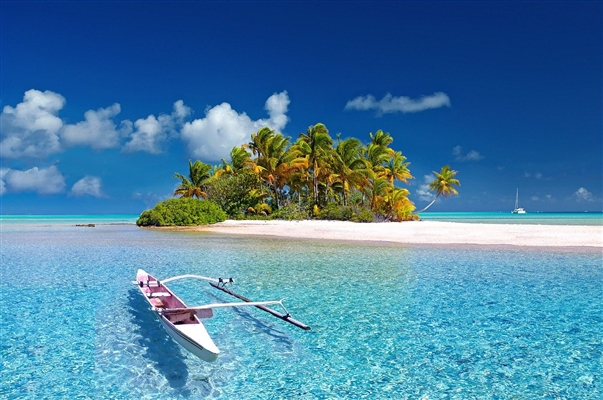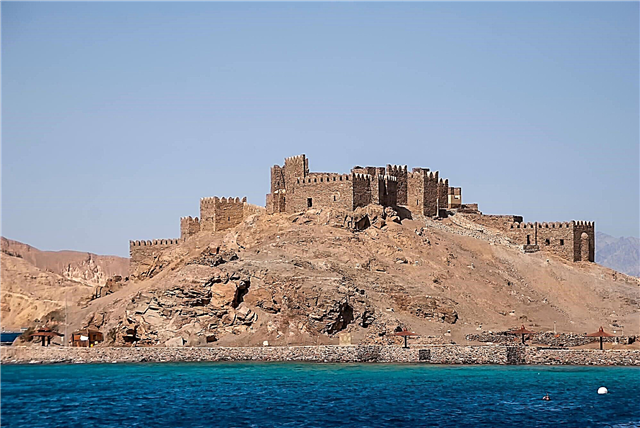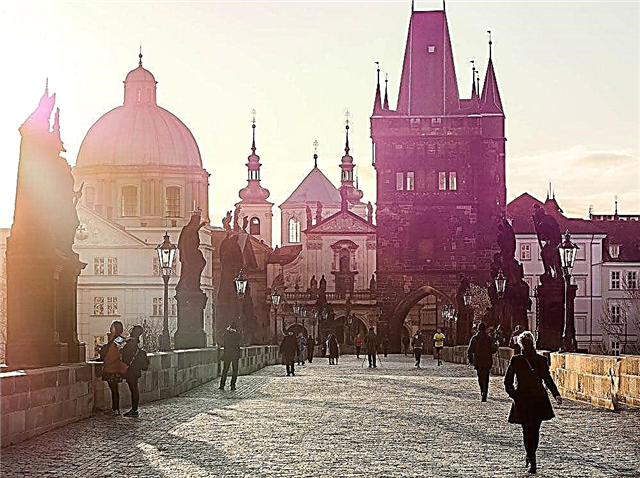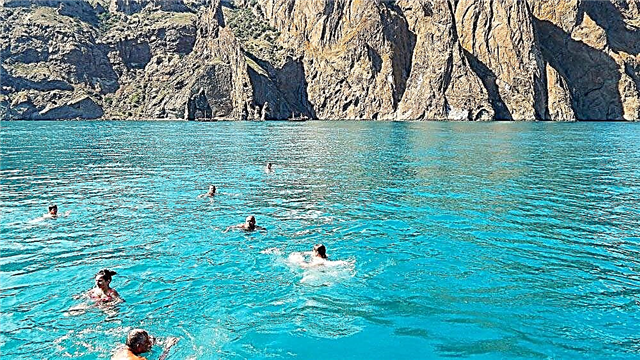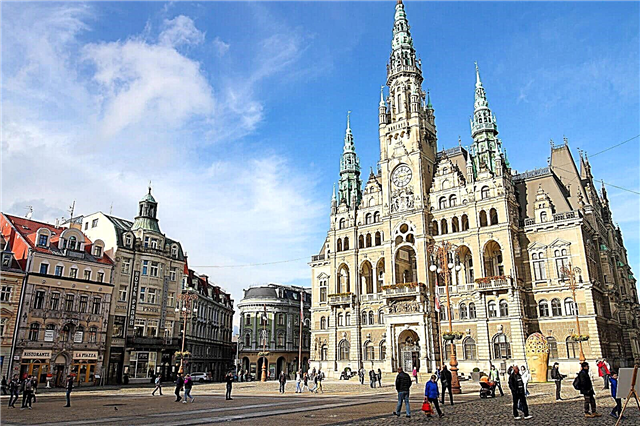The Czech Republic is an exemplary European country with an interesting history and many natural attractions. For tourists in Czech cities there is no off-season, almost all types of tourism are developed here: excursion, health-improving, skiing, and also gastronomic. Beer lovers come here to taste exclusive varieties and appreciate the unique serving of the drink. The south of the region is famous for its vineyards and aromatic white wines.
There are more than 130 unique historical complexes in the republic, many of them are included in the UNESCO heritage list. According to statistics, the most visited in the Czech Republic are balneological resorts with numerous health resorts, as well as Prague, Karlštejn, Slavonice and others.
The largest cities in the Czech Republic
List of the largest cities in terms of population in the country.
Prague
Built on the banks of the Vltava River, it is the administrative center and capital of the Czech Republic. Consists of two parts, connected by a pedestrian Charles Bridge: Old Mesto, Mala Strana. The city is home to the largest castle in the world, Prague Castle - part of the building is given over to the presidential residence. There are many unusual sculptures and monuments in Prague. The smallest street in the city is only 70 centimeters wide.
Population - 1 308 632 people (2019)

Brno
Cycling and hiking trails are well laid out in the city, allowing tourists to see all the most interesting places, as well as protected areas. Brno is the center of winemaking in the Czech Republic. A beautiful panorama opens from the tower of the town hall, in its passage there is a stuffed animal of a huge crocodile brought from Turkey in the 17th century. The main attractions include the Moravian Gallery, the Cathedral of Peter and Paul, the Capuchin Monastery, the Church of St. Jacob and others.
Population - 380 681 people (2019)

Ostrava
The visiting card of the city is the central square of Masarykovo name. Here you can see fountains gushing directly from under the asphalt, a monument in honor of the liberation of the city from the plague, as well as the old Town Hall. You can appreciate the industrial heritage of Ostrava by visiting the former metallurgical complex, which has been transformed into a museum. The first puddling oven in the Austrian monarchy was installed in the Glubina mine.
Population - 289 128 people (2019)

Pilsen
It is the capital of breweries. The city was named after one of the varieties of the intoxicating drink. Pilsen has the most interesting museums. For example, the brewing museum, where beer began to be produced back in 993. Tourists here can see the largest mug carved from a stump, a collection of beer labels and the process of brewing a beer drink. The largest beer festival Pilsner Fest is held annually at the end of August. Lovers of beautiful architecture and art should visit the City Hall, the Franciscan Monastery and the Great Synagogue.
Population - 172 441 people (2019)

Liberec
The city was founded in the XIII century, located on the banks of the Nisa River at the foot of the mountains. Liberec will appeal to fans of outdoor activities and tourists with children. The city has a water park as well as an interactive amusement park. It is interesting to explore the pedestrian areas around Jested Mountain. The Old Town Hall, museums and castles will tell the secrets of the history of this old Czech town.
Population - 104 445 people (2019)

Olomouc
According to one of the legends, the founder of the city is Julius Caesar. Olomouc has many Gothic towers, ancient fortresses and monasteries. It has a rich cultural life. Art festivals and folklore events are often held here. It is a student city, and one of the first higher educational institutions in the Czech Republic is located - Palacky University. Olomouc is decorated with Baroque fountains and spacious squares.
Population - 100 523 people (2019)

Ceske Budejovice
A city with a medieval layout, you can admire the remains of ancient towers, houses with Baroque and Renaissance facades, as well as buildings with arcaded galleries. The main square, the largest in size in the Czech Republic, is square in shape. In České Budějovice, the world-famous Budweiser beer is produced. The local brewery Budějovický Budvar is open to tourists.
Population - 94 014 people (2019)

Usti nad Labem
It is an industrial city with a river port and an important railway junction. The symbol of Usti nad Labem is the Streshkov fortress. Its towers offer a beautiful view of the mountains and the panorama of the city. Knight tournaments and various festivals are held annually in the castle. From modern sights, the Mariana Bridge, built at the end of the 20th century, is breathtaking.
Population - 92 952 people (2019)

Hradec Kralove
Translated as the city of the queen, the first mention of the residence dates back to the 10th century. Hradec Králové has a large concentration of churches, picturesque parks and galleries. Valuable paintings and collections of antiques can be viewed in museums, as well as in the bishop's residence. The main attractions of the city include the Gothic cathedral “Katedrála svatého Ducha”, the white sandstone tower “Bílá věž”, the old town hall and the house of Queen Eliska.
Population - 92 742 people (2019)

Pardubice
This is a city of horses and delicious gingerbread. Horse races and a chess tournament are held here every year. A large number of historical monuments of the 16th century have been preserved in Pardubice, therefore it has the status of a reserve. The center is built up with houses in the Renaissance style, the facades of which are decorated with biblical paintings. You can appreciate the city panorama from the Green Gate clock tower, 59 meters high. Next to it is the Church of St. Bartholomew.
Population - 90 688 people (2019)

Zlin
One of the ancient cities of the Czech Republic, which at the end of the XIV century received permission to brew its own beer. Zlín has a unique architecture, most of the buildings are lined with red bricks and made in the style of functionalism. You can also find here typical Czech castles, as well as a square with a church. As for entertainment, there is a zoo, where tourists can observe the life of animals living without cages and open-air cages in a biopark.
Population - 74 997 people (2019)
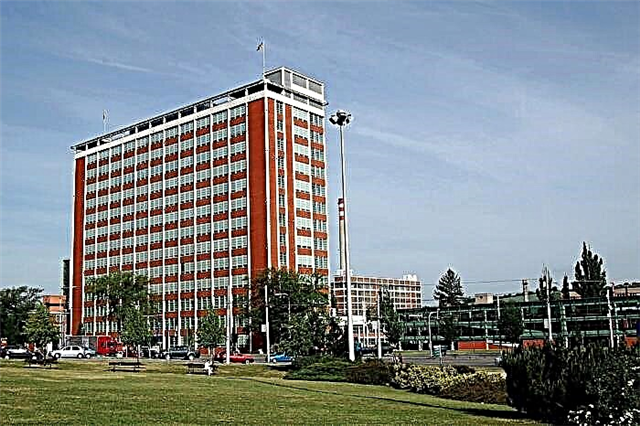
Havirzhov
It was formed as a result of the merger of several villages in the middle of the 20th century. Havířov has an industrial status and is built up with high-rise blocks typical of socialist times. In view of its youth, the city did not manage to acquire historical sights. Tourists are attracted here by the annual festival of florists. The city has a large number of sports grounds, as well as a water park.
Population - 71 903 people (2019)

Kladno
The first mention of the city appeared in the XIV century. Here people produced charcoal, cut down timber and built the first horse-drawn railway on the continent. Kladno flourished in the middle of the 19th century, due to the beginning of coal mining. The modern city is home to world famous manufacturing companies: the LEGO plant, the manufacturer of Showa Aluminum car air conditioners. Its architectural heritage includes the Srednicheski Theater and the local castle.
Population - 69 054 people (2019)

Bridge
The city was founded in the 10th century on a marshy territory, through which trade routes to Freiberg ran along wooden bridges. In the 19th century, a brown coal deposit was found here. Due to the coal mining industry, the Bridge was destroyed and moved to a new location. The Church of the Assumption of the Virgin Mary is the only surviving landmark of historical times. Now tourists are attracted to the city by safari in mines, a hippodrome and a vineyard where kosher wine is produced.
Population - 66 186 people (2019)

Opava
Small border town.During World War II, some historical buildings were irretrievably destroyed, the rest of the sights were restored by the Czech authorities. You can admire the panorama of Opava from the 60-meter "Watchtower" located on the Upper Square. The Church of the Holy Spirit is one of the most significant objects; it was once visited by Beethoven. The city has many parks and green areas for walking.
Population - 56 638 people (2019)

Frydek-Mistek
The city was formed in 1943, when the two historical regions Frydek and Mistek, located on both banks of the Ostravice River, were united. The main attraction is the Frida Castle. It was rebuilt and restored several times, as its owners changed frequently. Now it houses the Museum of the History of the Moravian-Silesian Region.
Population - 55 931 people (2019)

Karvina
A unique city where a health resort and a center of the coal industry coexist at the same time. Here coke is mined and metalworking is developed. The Darkov health resort is famous for the treatment and prevention of diseases of the musculoskeletal system, as well as neurological diseases. Among the top interesting places to visit in Karvin is the Church of St. Mark, Bozena Nemcova Park, Frishtat Castle, a water tower and a cast-iron fountain.
Population - 52 824 people (2019)

Jihlava
A city that survived the silver rush. Now only the catacombs remain from the fossils, in which tourists like to walk. On the ground Jihlava there are also many attractions, which are concentrated in Massarykova Square. The central decorations of the city include the Cathedral of St. Ignatius, the Town Hall and the Cathedral of St. Jacob. Fragments of fortifications have also been preserved in the city.
Population - 50 845 people (2019)

Teplice
A resort town, its name translates as warm water. In the Teplice sanatoriums, vascular diseases and disorders of the musculoskeletal system are treated by means of baths with warm mineral water. The city is also interesting for mountain tourism lovers, there is a cable car, along which you can climb to the top of Komarži Vizka. The main city attractions include Duchtsov Castle, Dubravka Fortress, planetarium, botanical garden and others.
Population - 49 575 people (2019)

Decin
It is a city of bridges. Pedestrians are allowed to enter Ovechiy and Old Town bridges. The first was built in 1620 of stone and basalt blocks and is made in the Baroque style. The Old Town Bridge has a Gothic style of execution; it is decorated with sculptures of Saints Vitus, Jan Nepozumny and Wenceslas. The Elbe River divides Decin into two parts: Podmokly and the Old Town. All historical fortresses, castles and architectural monuments are geographically located on the right bank of the river in the old quarter.
Population - 48 809 people (2019)

Khomutov
There are many coal mines in Chomutov, but it is not a typical industrial city. Here you can walk around the historical center, see the plague pillar on the main square, look into the town hall and numerous churches. Tourists love to visit Lake Kamentsovo, which was formed at the site of mining of alum shale. Not far from the lake is the Podkrušnogorskiy Zoo.
Population - 48 720 people (2019)

Karlovy Vary
The city gained fame and popularity among tourists thanks to mineral water springs, an international film festival, waffles "platkam" and "Becherovka". Karlovy Vary healing springs have a positive effect on health. In 131 medical institutions with their help, they treat diseases of the gastrointestinal tract, liver, diabetes mellitus and other ailments. Karlovy Vary has beautiful architecture, many squares and parks, and an exotic butterfly garden.
Population - 48 501 people (2019)

Jablonec nad Nisou
The city is located among wooded hills on the banks of the Nisa River. According to legend, during the religious wars, the settlement was burned down, leaving only one apple tree. In honor of the preserved tree, it was named Jablonec. Today Jablonec nad Nisou is renowned as a good ski resort. There are many jewelry workshops and glass-blowing factories in the city that produce crystal and Bohemian glass.
Population - 45 802 people (2019)

Mlada Boleslav
It is an industrial city renowned for its Škoda car factory. There is a museum in Mlada Boleslav, where you can see the exhibits of the first Skoda cars, as well as their modern counterparts. The historical heritage of the city has been preserved in the form of beautiful cathedrals, churches, a princely fort, a city hall and a century-old theater. The city observatory is also an interesting object.
Population - 44 489 people (2019)

Prosteyev
The city of fashionable clothes, it houses a garment factory known throughout the Czech Republic. There are many squares in Prostejov, which are geographically located nearby. Tourists can explore the local Renaissance castle and the old and new town halls. The old version of the city hall now houses a museum. There are springs with mineral water in the city, and I am gradually transforming it into a resort.
Population - 43 680 people (2019)

Prerov
The city was founded in 1019. The history of the settlement can be learned by visiting the main attraction on the upper square - the castle of the Pernstein family. It houses exhibitions of historical furniture, an entomological collection and ancient luxury goods. On one of the towers of the castle there is an observation deck that allows you to see Přerov from above. On the square you can see original monuments, baroque sculptures and the remains of a fortress.
Population - 43 186 people (2019)

Ceska Lipa
The city has a large concentration of historical sights: Lipa castle, Augustinian monastery, town hall, as well as the red house. There is an observation tower located in the northern part of Ceska Lipa on the Spicak mountain at an altitude of 459 meters. Tourist routes are laid within the city limits, allowing you to appreciate the beauty of the surroundings. Fans of outdoor activities will like horseback riding, you can also visit the skating rink or the water park.
Population - 37 444 people (2019)

Trebic
A large number of historical monuments are concentrated in the city. The central attraction is the monastery with the Basilica of St. Prokop, around which Třebíč was built in the 13th century. On the main square of Karlova náměstí, you can appreciate the interesting architectural works of the Painted House and the Black House, and the town hall is located here. The city has preserved a Jewish quarter with synagogues and a cemetery.
Population - 35 691 people (2019)

Trineets
The city is located close to the Polish border, about 17% of the population is Poles. A large metallurgical plant operates in the region. In 1969, the first metallurgical museum in the country was opened here. Tourists love Trinec for its picturesque valleys and Maple Hill. In winter, they ski here, and in summer, the slopes are used as landing sites for paragliders.
Population - 35 131 people (2019)

Camp
A small town that can be viewed in a few hours. The main attraction of Tabor is the Klokot temple, which has 10 towers in its construction, which were built in the Gothic style. Of particular interest are the city dungeons, which connect the basements under the houses with each other. Their total length is 20 kilometers; a plot of 800 meters is available for tourists. You can visit the Music Museum and the Botanical Garden in Tabor.
Population - 34 456 people (2019)


